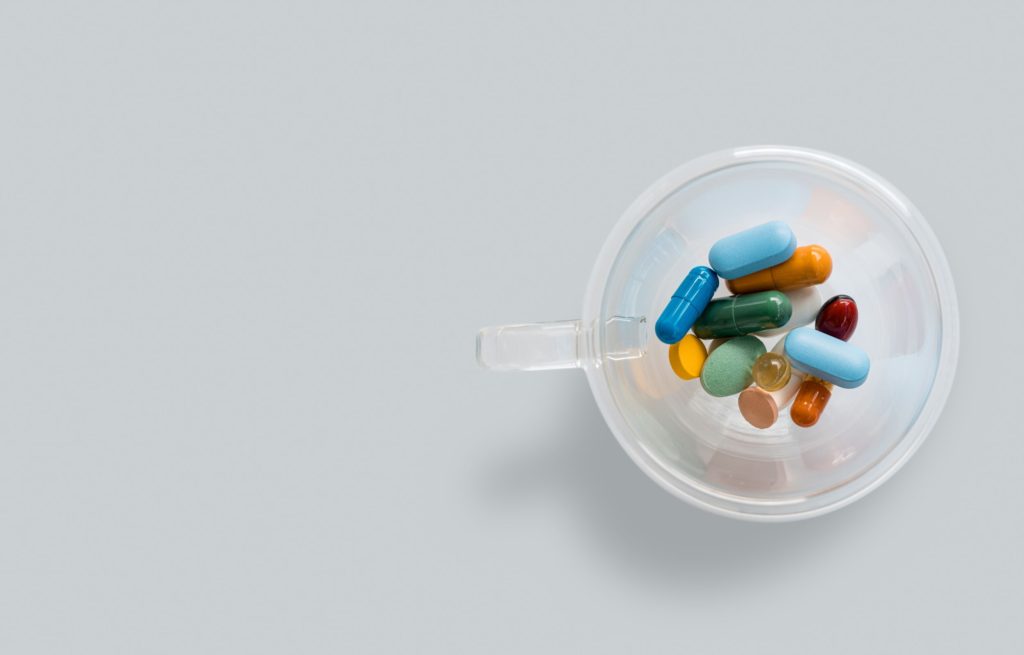Pantothenic Acid (B5)
Pantothenic acid is named from the Greek word pantos, meaning everywhere, consistent with its widespread occurrence in animals and plants.
A water-soluble vitamin converted in the body to coenzyme A .Coenzyme A acts as a catalyst interacting with vitamin B1,vitamin B2, niacin, vitamin B6, and biotin in various metabolic functions,. It helps in the breakdown of carbohydrates, proteins and fats for energy.
Pantothenic acid is absorbed with other B complex vitamins from the gastrointestinal tract. It is found throughout the body tissues, usually as coenzyme A. The highest concentrations found in the liver, adrenal glands, heart and kidneys.
There is little storage of the vitamin in the body and the vitamin is excreted unchanged by metabolic processes (70 percent in the urine and 30 percent in fecal waste).
Key Functions
This vitamin is necessary for the synthesis of vitamin D, steroids cholesterol ,bile, red blood cells, porphyrins, neurotransmitters such as acetylcholine and other vital body biochemicals. Its is also necessary for the normal function of the skin.
Deficiency
B5 deficiency is very rare and seen only in cases of severe malnutrition. Its found in many common foods and average diets are thought to have an adequate amount of it. Pantothenic acid is also made by the normal bacteria that live in the colon. Absorption of pantothenic acid from the colon has been demonstrated, but may not be available in meaningful amounts from colonic bacteria.
Recommended Dietary Allowance (RDA)
2 to 3 mg is appropriate for infants and 4 to 5 mg for children seven to 10 years of age. Four to 7 mg of the vitamin daily by age 11 and for adults is probably safe and adequate.
Dietary Sources
A 2,500-calorie diet from plant and animal sources provides approximately 10 mg of pantothenic acid to you. Richest sources of vitamin B5 include eggs, potatoes, salt-water fish, pork, beef, milk, whole wheat, peas, beans (except green beans) and fresh vegetables.
Vitamin B6—Pyridoxine (pyridoxal, pyridoxamine)
Key Highlights
- Main function: building amino acids and fatty acids.
- RDA: men, 1.7 mg; women, 1.5 mg. Tolerable upper intake level is set at 100 mg daily. No toxicity reported from food or below 200 mg per day.
- Healthy food sources: Bananas, potatoes, and spinach.
- Degradation: easily destroyed by heat and can be leached out into cooking water.
- Coenzyme form: Pyridoxal Phosphate (PLP).
A group of chemically related structures that are converted in the liver to the active form of the vitamin. The Council on Pharmacy and Chemistry has assigned the name pyridoxine to the vitamin.
Key Functions
- B6 acts as a coenzyme by participating in more than 60 enzymatic reactions involving amino acids and essential fatty acids.
- Amino acids are the building blocks of proteins, and therefore B6 is essential for the growth and maintenance of almost all of our body functions.
- The vitamin stimulates the conversion of amino acids to carbohydrate or fat to be utilized for energy or stored for later use.
- It is also essential for the enzymatic reaction that releases sugar from storage in the liver.
- B6 is essential in the conversion of tryptophan to niacin .
- Pyridoxine is also involved in the synthesis of hormones, the red-blood-cell protein hemoglobin and formation and maintenance of the nervous system.
- It helps in the manufacture of some neurotransmitters that regulate nerve impulses and prostaglandins that help regulate blood pressure.
- Help’s in muscle contractions , heart and other processes.
Deficiency
B6 deficiency usually occurs in individuals also lacking other B-complex vitamins. Skin rashes, seizures, carpel tunnel syndrome and anemia are the most characteristic features of pyridoxine deficiency.
Some infants who are born with a defect in B6 metabolism develop mental retardation and seizures, or convulsions.
It has also been used to treat the depression that accompanies the use of oral contraceptives by some women.
Recommended Dietary Allowances
The RDA for adult men is 2.0 mg and 1.6 mg for women. These values are based on the anticipated average quantities of protein consumed of 100 grams. However, if a person eats huge amounts of protein, these allowances may need to be increased.
Dietary Sources
The highest concentrations of vitamin B6 are found in chicken, fish, kidney, liver, pork and eggs.Unmilled rice, soy beans, oats, whole-wheat products, peanuts and walnuts are also good sources of the vitamin.
Biotin (B7)
Key highlights
- Main function: energy metabolism.
- Adequate Intake: Men and women, 30 mcg.
- No toxicity reported.
- Deficiency is very rare.
- Healthy food sources: found in a wide variety of foods.
- Degradation: uncooked egg whites bind biotin.
- Coenzyme forms: Acetyl-CoA carboxylase, Pyruvate carboxylase, Methylcrotonyl-CoA carboxylase, and Propionyl-CoA carboxylase
Key Functions
A coenzyme manufactured by bacteria normally found in the human intestinal tract and essential in the metabolism of both fats and carbohydrates. Because it is manufactured in humans, it is not a true vitamin (see VITAMIN).
Deficiency
Raw egg white contains the antivitamin substance avidin, which, if ingested in high and prolonged quantity, results in a rash and glossitis (inflammation of the tongue) caused by biotin deficiency.
Long-term total parenteral nutrition (TPN), an intravenous method of nourishing people who are extremely ill and/or incapable of eating, may also cause biotin deficiency.
Infants may exhibit the rash seborrheic dermatitis and hair loss due to a lack of biotin, but hair loss only responds to supplementation in a true deficiency of the substance.
There are reports that some individuals may exhibit such Alzheimer .Main symptoms are disorientation, speech disorders, loss of memory, restless legs, tremors and unsteady gait that are actually caused by biotin deficiency.
Biotin deficiencies are rare except for some genetically impaired groups of individuals and bodybuilders who eat large quantities of raw eggs .Also, persons treated with antibiotics for a prolonged time might have impaired bacterial synthesis of biotin because of the destruction of normal bacterial flora in the gut.
Recommended dietary allowances
Although there is no recommended daily allowance (RDA) for biotin, a dosage of 150 to 300 mcg daily promptly improves biotin deficiency.
Biotin is made by the bacteria living in healthy large intestines. The wall of the large intestine has a specialized process for the uptake of biotin. This may be one reason why biotin deficiency is so rare.

